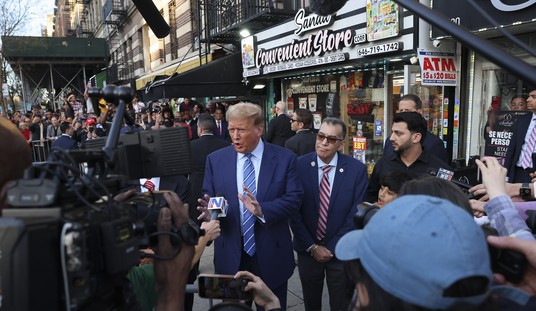Former New York Republican Sen. Alfonse D'Amato is offering some advice on the importance of neighborhoods to eight architectural-design teams competing in a new History Channel series that conjures up how the District might look 100 years from now.
"In all those years that I served in Washington, D.C., anytime I wanted genuinely good pastrami, Danish, bagels, or pizza, I took a plane, train or car to go home to New York," he said. "While there are great restaurants in Washington, the sense of ethnicity — where food is celebrated as part of a neighborhood's pride — was missing."
Mr. D'Amato says Washington could use less marble and more old-fashioned corner markets.
Dog's world?
Christopher Cox, chairman of the U.S. Securities and Exchange Commission (SEC), assures Americans that even though technology can do a great deal to improve life, there will always be the need for humans to smooth the rough edges.
"There's one futurist who thinks technology can do it all, who says the SEC of the future will have only two employees — a man and a dog. The man will be there to feed the dog. The dog will be there to keep the man from touching the equipment.
"Don't believe that for a minute," says Mr. Cox, a former Republican congressman from California.
It ain't good
Housing and Urban Development Secretary Alphonso R. Jackson didn't need to tell a White House gathering of county executives that "the housing market is going through some painful contractions" that are now beginning to affect local government budgets.
"If a homeowner stops paying, you stop collecting. It's not hard to do the math," noted Mr. Jackson, pointing out that in nearby Fairfax County the number of foreclosures "soared from 198 in 2005 to more than 4,000 last year."
Recommended
Not to worry
The FBI was sympathetic when the American Red Cross fell victim in recent days to an e-mail hoax.
After all, the FBI, and for that matter the entire Justice Department, have been targets for several months now of fraudulent spam messages. The bogus correspondence, which even bears the Justice logo, is addressed to specific Americans or their businesses.
Even more unsettling, the recipients are notified that they are the subject of complaints filed with the Justice Department, which have been forwarded to the Internal Revenue Service — along with case numbers. "These e-mail messages are a hoax. Do not respond," Justice stresses.
Now you know
It's always been a mystery, but now researchers have discovered why the nearly 46-carat blue Hope Diamond on display in Washington sometimes shines a fiery red.
"The mysterious red phosphorescence, rarely seen in other blue diamonds, added to the Hope Diamond's mystique and allure. However, the mystery has now been solved," announces the Smithsonian Institution, crediting the discovery to Jeffrey Post, curator of the National Gem Collection and mineralogist at the Smithsonian's National Museum of Natural History.
Working with six other researchers, Mr. Post probed the phosphorescence of the giant diamond, the centerpiece of the National Gem Collection seen by millions of visitors each year, and 66 other natural blue diamonds held by the museum, and found a way to "fingerprint" them.
The Hope Diamond, it turns out, is even more a "rare scientific specimen" because of its red-color domination. Almost all the other diamonds studied had components of blue and red light, which has something — don't ask us what — to do with their formation in the earth.
You call this fast?
Realizing NASA and the Daytona 500 are both celebrating their 50th anniversaries in 2008, the space agency, for publicity purposes, sent astronaut Andrew Feustel to race around the track of the Daytona International Speedway.
A NASCAR fan, Mr. Feustel made the laps in an official track vehicle that traveled more than 100 mph — albeit not nearly as fast, NASA points out, "as the 17,500 mph he'll travel on his upcoming space-shuttle flight."

























Join the conversation as a VIP Member